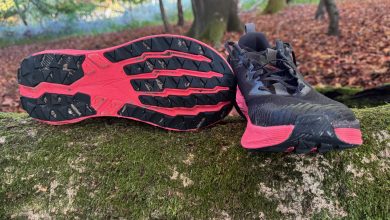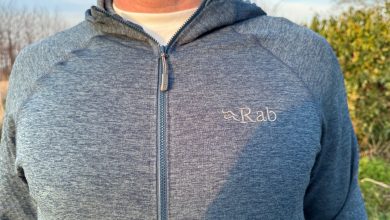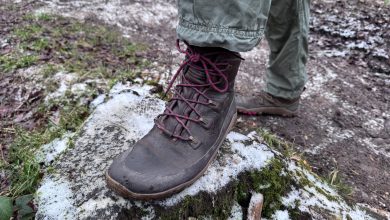Review: Vango Contour 60+10

For my recent trip to Scotland I really needed a new backpack. My smaller 30L bag was far too small for everything I needed to take, and my larger bag is around as old as I am and falling apart to the point where I didn’t really think I could rely on it any more. So obviously I needed a new one.
My preference would have been for an Osprey Atmos 65 pack. They make probably the best widely available relatively ‘mass-market’ backpacks and are popular for their light weight, comfort, and innovative features. Sadly, though, at the time I simply wasn’t willing to spend around £200 on a new pack, so I looked at other options.
The Vango Contour 60+10 seemed to be a decent alternate option. Designed with serious hiking in mind, and approved by the Duke of Edinburgh scheme (for what that’s worth) it’s the sort of pack you can find on offer in most outdoor stores, or at a fairly knock-down price in Decathlon. That’s not necessarily a good thing, but it’s also not necessarily a bad thing. In the end I got it for only about £60 which means that even if it requires replacing in a year or two (and to be clear, I see no evidence yet that it will) it’ll still be good value. I’m reasonably sure that the ‘60+10’ refers to the fact that this is a 60L pack with about another 10L of space available using the extendable gaiter at the top of the pack. Either way, there is a total of 70L of space available which I found to be about right for self-supported hiking given the need for a tent, sleeping pad, sleeping bag, warm and wet kit, stove (some lighweight options here), food and so on (with nothing on the outside, though a sleeping pad can easily be strapped to the bottom if required).
I’m reasonably sure that the ‘60+10’ refers to the fact that this is a 60L pack with about another 10L of space available using the extendable gaiter at the top of the pack. Either way, there is a total of 70L of space available which I found to be about right for self-supported hiking given the need for a tent, sleeping pad, sleeping bag, warm and wet kit, stove (some lighweight options here), food and so on (with nothing on the outside, though a sleeping pad can easily be strapped to the bottom if required).
Compartment-wise the bag is not wildly different to most packs of this size: a smaller compartment at the foot with separate zip access, a large main compartment, two side-pouches with zips, and two zip pouches in the lid (one on the outside, one on the inside).


That mix works fairly well for me. The small compartment at the bottom is often referred to as being for your sleeping bag, presumably on the basis you can keep it away from wet kit (especially your tent) and unpack/pack it without disturbing everything else. Since I keep my sleeping bag in its own dry bag, and 90% of the kit in the main compartment is required for sleeping anyway, that approach doesn’t make much sense to me. Instead, I use the bottom compartment for my stove and at least one day’s worth of food, meaning that it’s easy to grab during the day for lunch, snacks, or to make a quick brew.
The two compartments in the top flap are useful for other items that need to be kept safe, separate and/or accessible.
The two side compartments are handy for other bits and bobs that you want to keep separate, or make accessible during the day. I used one for water, keeping a nalgene and my water purification stuff in it, so I could get hold of them easily when we found somewhere to top up water. The other I put bits of additional warm kit like hats and gloves in. I have mixed feelings about side pouches of this type – that lie flush with the rest of the pack but expand due to folded/pleated material. They are actually fairly roomy but a) the material tends to expand in the middle while being held tight at either end, which makes them awkward to put certain items into, especially cylinders like water bottles. They also always seem to have a very tight zip, so – again – while there is actually plenty of space inside the compartment, it seems hard to get things in and out sometimes. They are best suited to small items, or soft and stuffable things like hats and gloves.
Inside the main compartment is a pouch and hook to secure a camelbak (or similar hydration system) and there are channels on both the left and right to run the drinking tube through, depending what side you want it on.

Another small feature I found useful was the integrated waterproof cover in a little zip compartment in the bottom. This made it very easy to put the cover on quickly, or put it away again, which was something we ended up doing on a fairly regular basis. The cover is bright orange which isn’t very stylish but is actually fairly handy for safety.

One feature the bag lacked was any kind of external mesh, bungee or strapping to tuck things like a waterproof in. It’s not the end of the world, but I ended up with my waterproof hanging loosely under the top flap a lot of the time, since I was using it so frequently and I didn’t want to keep introducing water into the pack.

Unlike some of the more high-end packs that come in multiple sizes, the Vango Contour has an adjustable back panel. In theory you can measure your back to work out what setting to put it on, but I just tweaked it slightly until it was comfortable. Overall, the bag was relatively comfortable with a nice padded waist strap and plenty of adjustments allowing you to move the weight around a bit if you were getting sore.
One problem I had, however, was that the webbing straps that ran over the shoulders and through a buckle, which could be tightened to bring the top of the bag closer to the shoulders, didn’t seem to run quite parallel to the top of the shoulder straps. Instead, the one on the right cut into my neck. I can’t really work out why, and I did wonder if I had it pulled too tight, but a) it still did it when I loosened it and b) the left shoulder was fine. All it would have needed was a clip to keep it running over the shoulder, and potentially that’s something I’ll have to rig up for any future trips.
Although I haven’t used it enough to be really sure, the bag seemed rugged, strong and well-made. It’s certainly not super-light, and the fairly hefty waist and shoulder padding and adjustable back add a bit of extra weight that could be dispensed with on a more expensive pack, however it’s comparable with other similarly-priced rucksacks, and it’s certainly not ridiculously heavy.
Overall a very decent and usable pack, which should tide me over for some time until I finally spring for something more expensive, at which point the main priority will probably be to go considerably lighter, since that is really the only substantial drawback of the Vango Contour 60+10.
Like what you see? Get the Vango Contour 60+10 at Amazon.




